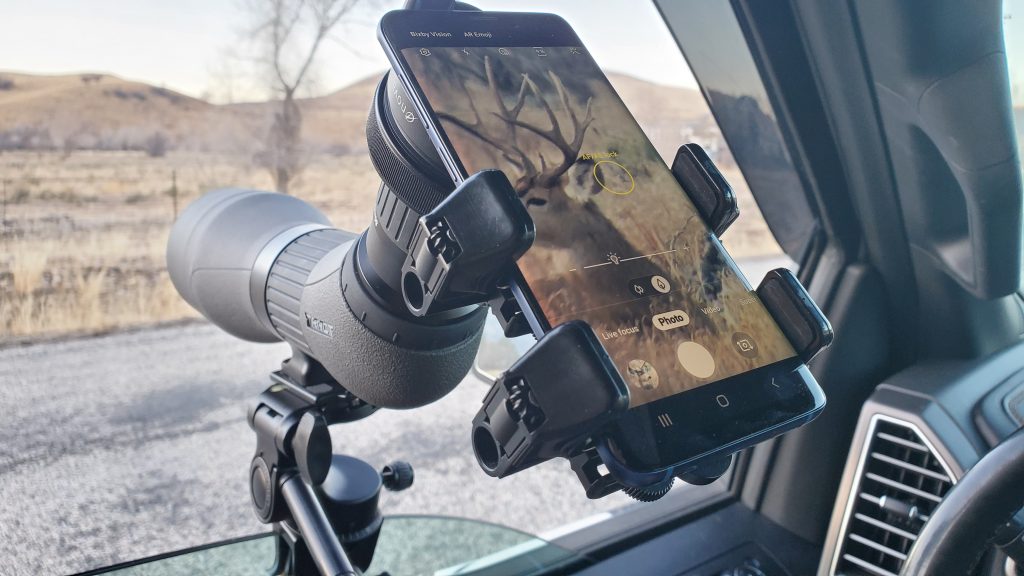5 Reasons to Own a Spotting Scope
5 Reasons to Own a Spotting Scope. There are a multitude of reasons why a spotting scope could become an integral part of your overall hunting and shooting experience.
Bull elk spend September in the Rocky Mountain region gathering a harem of cows. Pheasants along the grain fields of the Midwest stand tall and iridescent in the early autumn sun. Whitetail bucks with their velveted racks mill among each other in an uncut bean field in Tennessee.
These are the things that excite us; the times when we get to play the role of the unobtrusive and temporary spectator. Really, it’s the essence of hunting, to enter and leave a natural habitat undisturbed. Sometimes, in order to do this we need the right tools. More specifically, the right optics.
That’s where the optical system of a spotting scope plays such an important role in the life of one who shoots, scouts, hunts, and spends an ample amount of time observing nature. Whether you’re in the market for one or haven’t given it much thought, there are a multitude of reasons why a spotting scope could become an integral part of your overall hunting and shooting experience.
Closer to Nature
A hunter hunts because he is a conservationist. It’s not a far reach to call him a nature lover. If that were not the case, then why spend so much time out in it?
A spotting scope is one of the most incredible tools in that it gets you closer to nature. Imagine looking at a fine bull from 1,000 yards away. There’s no question of his magnificence. Now, imagine seeing that bull 25, 35, or even 55 times closer (as you increase the magnification of the spotting scope) than what he appears through the naked eye! Not only could you size him up accurately, you can also get a good read on his body language. Is he relaxed or nervous? Is he constantly checking the wind or calmly keeping an eye on his cows?
The same could be said for a leisurely birding outing. Minute features on a common warbler suddenly become detailed and intricate. The prairie chicken’s springtime mating dance leaves you with a memory imprinted on your brain that you’ll never forget. The examples, and possibilities, are endless.
Save Those Legs
Being that a spotting scope will get you closer to nature and the animals you’re pursuing, it will also allow you a closer look at the gateways of the stalk. Oftentimes, if you’re perched on a high ridge that gives you 360 degrees of visibility, it’s going to take a hike to get to where you’d even begin to think about preparing your gear for a close-quarters stalk. Making multiple “attempts” when you either bust a bull because of a bad approach route or you get close and deem him too small will wear out your legs over the course of a week’s hunt.
The old saying “work smart not hard” plays precisely into the use of a spotting scope on a big-game hunt. Save your energy for when you truly need it. Which is hopefully spent on a trophy buck or bull that eventually leaves the woods on your back.
Spotting Scope Photography
The combination of digiscoping accessories and smart phones have given amateur photographers another way to take long-distance photographs without needing to own a ton of equipment. The beauty of it (well, aside from the photographs) is that you can spot and shoot photos at the same time. In fact, having the ability to put what you’re looking at on your smart phone’s screen makes it a more inclusive experience.
[caption id="attachment_1137" align="aligncenter" width="720"] Spotting Scope[/caption]
Spotting Scope[/caption]
Easy on the Eyes
A spotting scope will help preserve your eyes just as it will your legs and lungs. When you’re spending long hours glassing big country, you don’t want to feel discomfort or strain in the eyes. We know how a spotting scope’s magnification gets you closer to the target. What the scope should also do is provide enough eye relief - the distance from your eye to the lens - so that you’re not forced to lean too hard into it. A scope with long eye relief will give you the full picture without blurry edges and a sore neck and eyes.
Getting into ELR Shooting
Extreme long range (ELR) shooting requires ELR optics. In order to accurately define your bullet’s point of impact, you need optics that can hone in on small spots from long distances. It’s a convenience, really. Rather than using the rifle scope for shooting and spotting. Or even more time consuming, walking down range every three shots. Unless of course you’re in it for the exercise, then by all means.
Optics in general are built to enhance the outdoor experience. In many cases, a binocular is a sufficient tool to meet all of your hunting and shooting needs. When you want more magnification, more depth, and a closer look at nature, animals, or long-range targets, the spotting scope is your answer.
One final thought. Spotting scopes require one important accessory - a tripod. Window mounts, cases, and digiscope devices are optional. And will undoubtedly add to the amount of fun and overall good use you’ll get with this already dynamic tool. But the tripod is a vital part to the setup that you simply shouldn’t go without.
[caption id="attachment_1335" align="aligncenter" width="728"] Top Rated TORIC 27-55x80 Spotting Scope[/caption]
Top Rated TORIC 27-55x80 Spotting Scope[/caption]